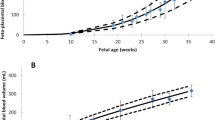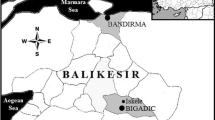Abstract
Boron, which is ubiquitous in the environment, causes developmental and reproductive effects in experimental animals. This observation has led to efforts to establish a Tolerable Intake value for boron. Although risk assessors agree on the use of fetal weight decreases observed in rats as an appropriate critical effect, consensus on the adequacy of toxicokinetic data as a basis for replacement of default uncertainty factors remains to be reached. A critical analysis of the existing data on boron toxicokinetics was conducted to clarify the appropriateness of replacing default uncertainty factors (10-fold for interspecies differences and 10-fold for intraspecies differences) with data-derived values.
The default uncertainty factor for variability in response from animals to humans of 10-fold (default values of 4-fold for kinetics and 2.5-fold for dynamics) was recommended, since clearance of boron is 3-to 4-fold higher in rats than in humans and data on dynamic differences—in order to modify the default value—are unavailable. A data-derived adjustment of 6-fold (1.8 for kinetics and 3.1 for dynamics) rather than the default uncertainty factor of 10-fold was considered appropriate for intrahuman variability, based on variability in glomerular filtration rate during pregnancy in humans and the lack of available data on dynamic differences. Additional studies to investigate the toxicokinetics of boron in rats would be useful to provide a stronger basis for replacement of default uncertainty factors for interspecies variation.
Similar content being viewed by others
References
U. S. Environmental Protection Agency, Integrated Risk Information System (IRIS) Online, National Center for Environmental Assessment, Cincinnati, OH (1998).
World Health Organization, Environmental Health Criteria for Boron—Draft, WHO, Geneva (1997).
World Health Organization, Environmental Health Criteria 170, Assessing human health risks of chemicals: derivation of guidance values for health-based exposure limits, WHO, Geneva, (1994).
M. L. Dourson, S. P. Felter, and D. Robinson, Evolution of science-based uncertainty factors in noncancer risk assessment,Reg. Toxicol. Pharmacology 24, 108–120 (1996).
A. G. Renwick, Safety factors and establishment of acceptable daily intake,Food Additives Contaminants 8(2), 135–150 (1991).
A. G. Renwick, Data derived safety factors for the evaluation of food additives and environmental contaminants,Food Additives Contaminants 10(3), 275–305 (1993).
R. D. Barr, W. B. Clarke, R. M. Clarke, J. Venturelli, G. R. Norman, and R. G. Downing, Regulation of lithium and boron levels in normal human blood: environmental and genetic considerations,J. Lab. Clin. Med. 121, 614–619 (1993).
A. S. Gordon, J. S. Prichard, and M. H. Freedman, Seizure disorders and anemia associated with chronic borax intoxication,C. M. A. Journal 108, 719–722 (1973).
C. D. Hunt, J. L. Herbei, and F. H. Nielsen, Metabolic responses of postmenopausal women to supplemental dietary boron and aluminum during usual and low magnesium intake: boron, calcium and magnesium absorption and retention and blood mineral concentrations,Am. J. Clin. Nutr. 65, 803–813 (1997).
J. A. Jansen, J. Andersen, and J. S. Schou, Boric acid single dose pharmacokinetics after intravenous administration to man,Arch. Toxicol. 55, 64–67 (1984).
C. Job, Resorption and excretion of orally administered boron,Z. Angew. Bader-Klimahelik 20, 137–142 (1973).
C. H. Linden, A. H. Hall, K. W. Kulig, and B. H. Rumack, Acute ingestion of boric acid,J. Toxicol. Clin. Toxicol. 24, 269–279 (1986).
T. L. Litovitz, W. Klein-Schwartz, G. M. Oderda, and B. F. Schmitz, Clinical manifestation of toxicity in a series of 784 boric acid ingestions.Am. J. Emerg. Med. 6, 209–213 (1988).
F. J. Nielson, Dietary supplementation of physiological amounts of boron increases plasma and urinary boron of perimenopausal women (Professional Communication),Proc. North Dakota Acad. of Science 50, 52 (1996).
K. O’Sullivan and M. Taylor, Chronic boric acid poisoning in infants,Arch. Dis. Child 58, 737–739 (1983).
H. W. Wiley, The excretion of boric acid from the human body (From the Bureau of Chemistry, Washington, D. C.), pp. 11–19 (1906).
L. C. Wong, M. D. Heimbach, D. R. Truscott, and B. D. Duncan, Boric acid poisoning: Report of 11 cases,Canad. Med. Assn. J. 90, 1018–1023 (1964).
Y. Bai and C. D. Hunt, Absorption and distribution of boron in rats following a single oral administration of boron,Proc. North Dak. Acad. Science 50, 53 (1996).
R. E. Chapin, W. W. Ku, M. A. Kenney, H. McCoy, B. Gladen, R. N. Wine, R. Wilson, and M. R. Elwell, The effects of dietary boron on bone strength in rats,Fundam. Appl. Toxicol. 35, 205–215 (1997).
W. W. Ku, R. E. Chapin, R. M. Wine, and B. C. Gladen, Testicular toxicity of boric acid (BA): Relationship of dose to lesion development and recovery in the F344 rat,Repro. Toxicol. 7, 305–319 (1993).
W. W. Ku, R. E. Chapin, R. F. Moseman, R. E. Brink, K. D. Pierce, and K. Y. Adams, Tissue disposition of boron in Fischer rats,Toxicol. Appl. Pharmacol. 111, 145–151 (1991).
F. H. Nielsen, T. R. Schuyler, and E. O. Uthus, Dietary arginine and methionine effects and their modification by dietary boron and potassium on the mineral element composition of plasma and bone in the rat,J. Trace Elem. Exp. Med. 5, 247–259 (1992).
S. Magour, P. Schramel, J. Ovcar, and H. Maser, Uptake and distribution of boron in rats: Interaction with ethanol and hexobarbital in the brain,Arch. Environ. Contam. Toxicol. 11, 521–525 (1982).
C. J. Price, P. L. Strong, F. J. Murray, and M. M. Goldberg, Blood boron concentrations in pregnant rats fed boric acid throughout gestation,Reproductive Toxicology 11, 833–842 (1997).
R. A. Vanderpool, D. Haff, and P. E. Johnson, Use of inductively coupled plasmamass spectrometry in boron—10 stable isotope experiments with plants, rats and. humans,Environ. Health Perspect. 102 (Suppl. 7), 13–20 (1994).
Kent, N. L. and R. A. McCance, The absorption and excretion of “minor” elements by man. I. Silver, gold, lithium, boron and vanadium,Biochem. J. 35, 837–844 (1941).
J. S. Schou, J. A. Jansen, and B. Aggerbeck, Human pharmacokinetics and safety of boric acid,Arch. Toxicol. Suppl. 7, 232–235 (1984).
W. Dunlop, Serial changes in renal haemodynamics during normal human pregnancy,Brit. J. Obstet. Gynaecol. 88(1), 1–9 (1981).
E. Krutzen, P. Olofsson, S. E. Back, and P. Nilsson-Ehle, Glomerular filtration rate in pregnancy: a study in normal subjects and in patients with hypertension, preeclampsia and diabetes,Scand. J. Clin. Lab. Invest. 52, 387–392 (1992).
S. N. Sturgiss, R. Wilkinson, and J. M. Davison, Renal reserve during human pregnancy,Am. J. Physiol. 271, F16-F20 (1996).
M. E Meek, R. Newhook, R. G Liteplo, and V. C. Armstrong, Approach to assessment of risk to human health for priority substances under the Canadian Environmental Protection Act.Environmental Carcinogenesis and Ecotoxicology Reviews C12(2), 105–134 (1994).
A. M. Jarabek, Inhalation RfC methodology: Dosimetric adjustments and doseresponse estimation of noncancer toxicity in the upper respiratory tract.Inhal. Toxicol. 6(suppl):301–325 (1994).
Author information
Authors and Affiliations
Rights and permissions
About this article
Cite this article
Dourson, M., Maier, A., Meek, B. et al. Boron tolerable intake. Biol Trace Elem Res 66, 453–463 (1998). https://doi.org/10.1007/BF02783155
Published:
Issue Date:
DOI: https://doi.org/10.1007/BF02783155




